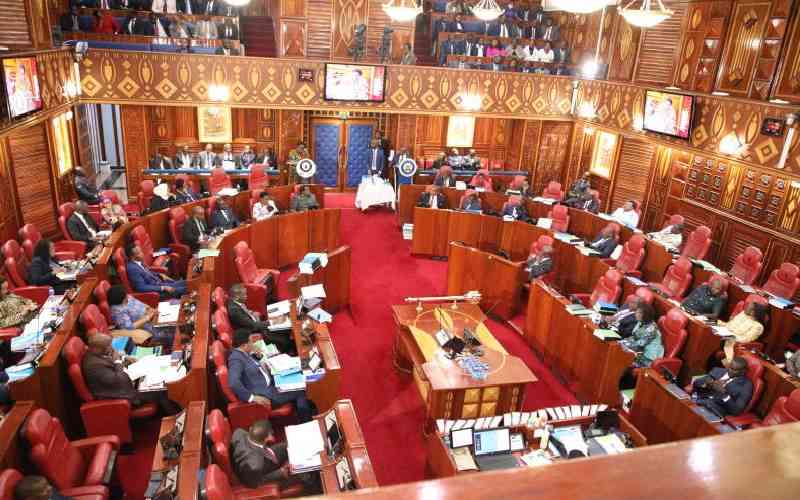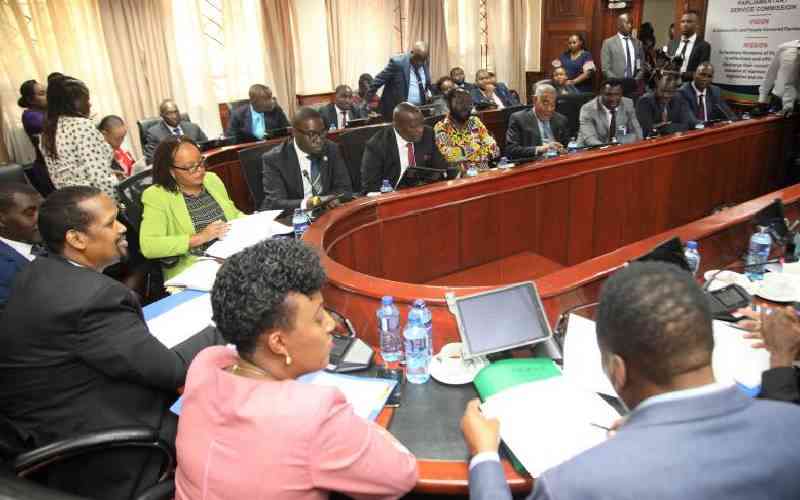
NAIROBI, KENYA: County governments will be subjected to tighter scrutiny in the coming financial year as Treasury seeks to grow the devolved units’ internally generated revenue fourfold.
According to the 2019/2020 Budget Policy document released last week, the Treasury is pushing for a review of laws on county levies as well as the stricter implementation of expenditure to reduce counties’ reliance on national government transfers
“As far as County Governments’ fiscal performance is concerned, the main challenges relate to weaknesses in own-source revenue (OSR) and the unstable pattern of financial activity within each budget period,” said the Treasury in part.
In the last financial year, County Governments had targeted to raise Sh49.2 billion in own-source revenue but only managed to collect Sh32.5 billion.
This is similar to collections realised in the 2016/2017 financial year, indicating stagnation in revenue collection.
“In general, counties’ OSR performance has deteriorated in the last three years - both as a proportion of targeted collections and in absolute terms,” explains the Treasury.
The devolved units’ locally generated revenue finances only smaller proportion of the counties’ expenditure.
Treasury data indicates that counties’ locally generated revenue funded 15.5 per cent of expenditure in the 2013/2014 financial year, with the figure shrinking to 13.1 per cent in 2014/2015 and 11.9 per cent in 2015/2016.
In the last financial year, counties managed to fund just 10 per cent of their budgets from own source revenue. This has seen the administrative units increase their reliance on Treasury disbursements from 83 per cent in the 2014/2015 financial year to 86 per cent last year.
Article 175 (b) of the Constitution indicates that the 47 counties should not only devolve political and administrative functions but also fiscal functions with internally generated revenues forming the main channel for achieving this.
Treasury has now proposed a set of legislative and policy interventions that if implemented could grow counties’ own source revenue from the current Sh32 billion to Sh120 billion.
This will be done through a national policy developed last year that has been submitted to and approved by the Cabinet with implementation scheduled to commence in the 2019/2020 financial year.
“To support implementation of this Policy, the National Government is initiating legislative reforms at the national level intended to improve performance of county governments’ revenue sources including property and entertainment taxes; business and liquor licenses, tourism levies, outdoor advertising fees, and several decentralised user charges,” explains the National Treasury in part.
Aside from assisting counties to determine their revenue potential and improve revenue forecasting, the policy will also standardise institutions and processes charged with managing revenue collection at the counties.
Stay informed. Subscribe to our newsletter
The State will also increase counties’ direct transfers through a new conditional allocation meant to assist the unit’s’ modernisation efforts and widen their respective tax bases.
“In FY 2019/20, the Government will also introduce a new conditional allocation through which the Kenya Urban Support Programme (KUSP) will be financed,” explains the Treasury in part. This is expected to facilitate municipal boards and town committees improve service delivery and collect more levies on those services. Counties will, however, be required to adhere to expenditure ceilings that have previously been ignored by most.
“Beginning 2019/2020 financial year, the National Treasury will renew its focus on enforcing compliance with the Fiscal Responsibility Principles - particularly legal thresholds for wage bill and development spending - as well as regulations to do with prudent management of fiscal risks, financial reporting, public procurement and management of public funds, among other existing legal guidelines,” explained Treasury in part.
Counties have faced criticisms for spending much of their budgets on paying salaries and allowances with little left for development spending.
Some have misappropriated with county staff amassing wealth in unexplainable terms within a short period.
Despite a requirement under the Public Finance Management (PFM) Act, 2012 to have 30 per cent of expenditure channelled to development projects, the majority of the counties have perennially flouted this provision.
According to Treasury data, only nine out of the 47 counties met this threshold in the 2017/2018 financial year with Taita Taveta, Nairobi, Kisumu, Vihiga, Meru, Wajir, Nyamira and Machakos counties spending less than 15 per cent on development expenditure. Counties’ have also been found in violation of PFM Act in regards to the portion of expenditure allocated to salaries and allowances.
In the 2017/2018 financial year, for example, only 15 counties complied with the PFM Act capping the wage bill to 35 per cent of total revenue.
Treasury figures indicate several counties, including Embu, Laikipia, Machakos, Nairobi, and Wajir had wage expenditures above 50 per cent of their total revenue in the last financial year and wants plans, including timelines, for achieving sustainable wage bills.
 The Standard Group Plc is a
multi-media organization with investments in media platforms spanning newspaper
print operations, television, radio broadcasting, digital and online services. The
Standard Group is recognized as a leading multi-media house in Kenya with a key
influence in matters of national and international interest.
The Standard Group Plc is a
multi-media organization with investments in media platforms spanning newspaper
print operations, television, radio broadcasting, digital and online services. The
Standard Group is recognized as a leading multi-media house in Kenya with a key
influence in matters of national and international interest.
 The Standard Group Plc is a
multi-media organization with investments in media platforms spanning newspaper
print operations, television, radio broadcasting, digital and online services. The
Standard Group is recognized as a leading multi-media house in Kenya with a key
influence in matters of national and international interest.
The Standard Group Plc is a
multi-media organization with investments in media platforms spanning newspaper
print operations, television, radio broadcasting, digital and online services. The
Standard Group is recognized as a leading multi-media house in Kenya with a key
influence in matters of national and international interest.










